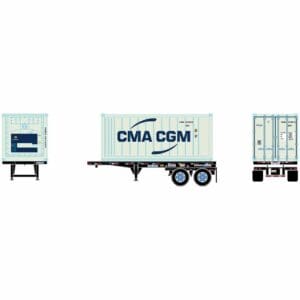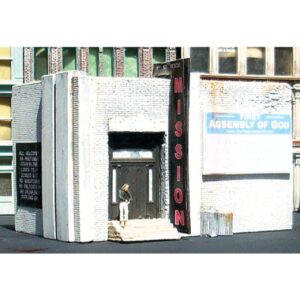INFORMATION:
Brand new just found in our overstock area of the store. Scale Trains’ Rivet Counter in HO Scale Union Pacific UP – TTGX Gunderson Multi-Max Autorack with Road Number 697497 item SXT32162.
With several thousand auto carriers built for nearly all North American Class One railroads since 2014, the Greenbrier/Gunderson Multi-Max has become the premier auto carrier design of the 21st century. Many of these cars wear colorful paint schemes and feature large logos which help them stand out alongside older autorack designs.
Our Rivet Counter series Multi-Max Autorack features maximum detail. Railroad, road number, and era specific details include four (4) body variations; 14 individually applied etched-metal side panels; three (3) ladder styles; two (2) types of end doors; end door rods; three (3) end sill configurations; two (2) different upper and lower side panel mountings; inside or outside mounted brake cylinder, brake beam, and brake rod support mounting brackets.
Road Number Specific ScaleTrains
- First time in HO scale
- Era: 2019 to present
- Series TTGX unknown, built 04-19 to 05-19
- Rack reporting mark: “SOO”
- Greenbrier builder’s plate
- Current body type
- Upper side panel mounting with three (3) outside mounting tabs and no strip
- Lower side panel mounting with four (4) lower recessed tabs and ¾ width strip
- Two (2) main bodies of rack mounting holes on painted panels
- Late end doors with “zig-zag” angle panels
- End sill step, end sill grab irons, and side sill grab irons
- Six rung side ladders
- Outside side sill brake cylinder and brake beam mounting brackets
- Outside side sill brake rod support brackets
- Paint colors match Tru-Color Paint color: roof TCP – 354 galvanized steel
- Car rack numbers and ARR rack clearance data is specific to each car number
- 14 photo-etched metal side panels
- Separate end door rods
- Photo etched metal defect card holder
- Durable die-cast metal semi-scale long-shank Type E couplers
- ASF low deck swing motion trucks with rotating axle bearing caps
- 28” machined metal wheels
- Highly detailed underbody brake system with wire form brake rods and air line plumbing, photo etched metal brake rod and air line plumbing support brackets; plastic brake beams, air reservoir, brake cylinder, control valve and retainer valve
- Minimum radius: 24”
- Recommended radius: 26”
All Rivet Counter Freight Cars Feature
- Fully assembled
- Multiple road numbers
- Factory-applied metal grab irons, coupler cut levers, and trainline hoses
- Intricate brake plumbing
- Photo-etched stainless-steel see-through end crossover platforms
- Printing and lettering legible even under magnification
- Accurately profiled .110″ wide wheel tread
- Weighted to Industry standards for reliable operation
- Operates on Code 70, 83 and 100 rail
- Packaging safely stores model
- Color matched to existing Tru-Color Paint colors whenever possible











Reviews
There are no reviews yet.